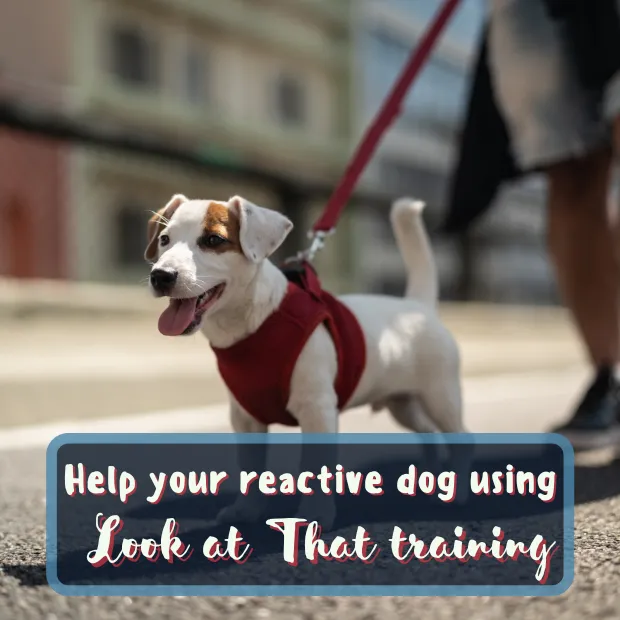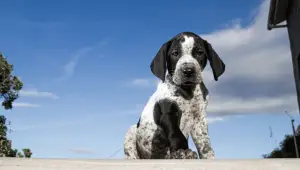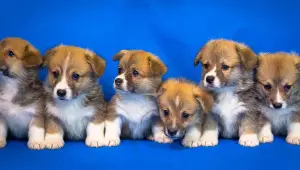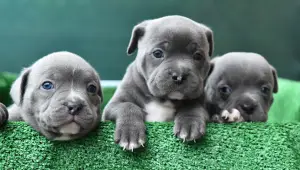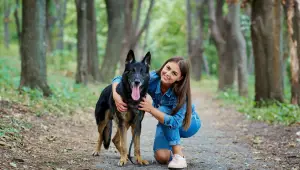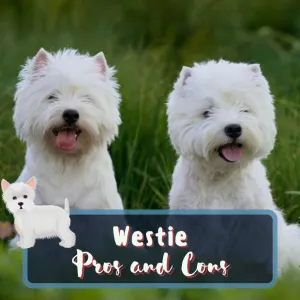Do you have a reactive dog? “Look at That” training can help! Find out what Look at That training is, why it works and how to help your reactive dog using Look at That training in this article.
Table of Contents
ToggleContents of this article:
- Reactive dog – “Look at That” training.
- What is Look at That (LAT)?
- What you will need to play Look at That with your reactive dog.
- How to play Look at That with your reactive dog – Step by step.
- How will I know whether Look at That training is working for my reactive dog?
- What if my dog doesn’t take treats when we are doing Look at That training?
- Using Look at That to help your reactive dog.
Help your reactive dog using Look at That training.
If your dog is reactive, it can be difficult to enjoy walks and outings together. However, with some patience and commitment, you can help your dog build confidence around their triggers and learn to stay calm, cool, and collected. You can enjoy walks again with your reactive dog after Look at That training.
What is Look at That (LAT)?
Look at That is a game by Leslie McDevitt that you can play with your dog to help them learn good things happen when they look toward their triggers.
This is a very important skill for dogs to learn, as it allows them to “self-soothe” in the presence of their triggers and over time, this changes their emotional response from fear or anxiety to confidence.
Playing LAT is a great way to help your dog learn to cope with their triggers in a positive, constructive way. It involves gradually decreasing the distance between your dog and their triggers while rewarding them for looking towards and then looking away from those triggers.
This game also helps you build a stronger bond with your dog, as you are teaching them that you are a source of calm and reliability in the face of their fears.
This is the first behavior I teach all my client dogs – it’s that important!
What you will need to play Look at That with your reactive dog.
Here’s your list of items you will need to practice this exercise with your dog.
- Your dog’s favorite high value treats.
- Something your dog is reactive towards.
- Familiarity with signs of stress in dogs.
- Lots of space.
The key to success with “Look at That” is patience, positivity, and practice!
To get started, you will need to identify the distance at which your dog is able to stay under their threshold without becoming reactive or showing any signs of anxiety.
When I teach this to my client dogs, I do it a little differently than you may have seen it described previously. To make it easier for the dog and the handler, I start without the trigger. This enables the dog and the handler can get used to the game in a relaxed way with no pressure.
Once you and your dog have mastered the basics of Look at That, you can begin to introduce the trigger slowly, at a distance where your dog is calm and confident.
How to play Look at That with your reactive dog – Step by step.
During each training session, it is important to keep your sessions short and positive. This will help keep both you and your dog focused and motivated for success.
Instructions:
- Start with your dog on a leash in a familiar, low-distraction environment, such as your back garden.
- Wait for something to catch their attention, such as a bird flying past.
- As soon as you see your dog look towards the bird, say your marker word (“Good” or “Yes!” are good marker words) or click your clicker if you’re using one, and give your dog a treat.
- When delivering the reward, do it in such a way that your dog has to look away from the trigger. This may be dropping the food past their nose so that when they follow it, they break their gaze towards the trigger by looking down at the ground. Alternatively, you can lure your dog’s gaze away by putting the food under their nose and moving it in a way that you are encouraging them to turn their head to the side. We want to avoid them fixating on the trigger and get them into the habit of looking away.
- Repeat this process several times, with anything that pops into view.
- Once your dog becomes more proficient at “Look at That”, they will look away themselves when you say your marker word or use your clicker.
- At the next stage, they will look at the trigger and look away before you mark.
- Regardless of what the dog does, whether they look away or not, always mark and reward.
- Once you are both fluent in this, it’s time to introduce a trigger at a distance where your dog can keep their cool and will still take food. For my dog reactivity clients, I use a stuffed toy in the shape of a dog at this stage, rather than a real dog.
- Keep your dog at a distance where they are unconcerned by the trigger and gradually decrease that distance, always keeping the dog under their threshold.
- If your dog starts to show any signs of stress or anxiety, such as excessive panting, whining, or trying to move away from or towards the trigger, then you are likely pushing them too hard. Take a step back and increase the distance between your dog and the trigger until they are once again relaxed and comfortable.
- When the behavior looks how you want it to, it’s time to add a verbal cue. When your dog gives a quick glance towards a trigger, say something like “Look!”. Your dog will quickly turn back to you to get their treat when you tell them to “Look!”
- Over time, your dog will learn that looking away towards the trigger is a good thing and they will look at their triggers calmly more often.
- With regular training and practice, you can help your reactive dog build confidence around their triggers and learn to stay calm, cool, and collected!
Some tips for playing LAT successfully include keeping sessions short, using high-value rewards, and introducing triggers at distances based on your dog’s reaction.
When you are taking this exercise out into areas where you have less control of the environment, use visual barriers such as parked cars to block the view of triggers that might be too close for your dog to cope with. The aim is always to help your dog to stay calm.
There will always be those occasions where a trigger appears and you can’t sufficiently increase the distance to get out of danger.
If this happens, have some treats ready to scatter feed your dog so that they associate the trigger appearing with something good happening, rather than feeling anxious.
Scatter feeding not only gives them a reason to look away, it also gives them the opportunity to sniff, which is a calming behavior to help relax them enough to recover from the encounter.
It is important to remain patient and positive throughout each training session, as this will help keep both you and your dog focused and motivated for success. With consistent practice, you can help your reactive dog build confidence around their triggers and learn to stay cool, calm, and collected!
How will I know whether Look at That training is working for my reactive dog?
One of the first signs my clients report is a reduction in the recovery time after the dog encounters a trigger.
Many of my face to face clients start off at a point where if they saw a trigger on a walk, the outing was over and they had to go home because their dog couldn’t cope and became unmanageable. After implementing LAT training, they start to find their dog can recover and continue the walk.
With repeated sessions, you should see an increase in the amount of time that your dog can calmly look at their trigger before they react. You should also see a decrease in the distance at which your dog reacts to triggers, and the reaction should become less intense.
Every dog varies in the speed of their progress, and it will take time and commitment to see results, but with consistent practice using Look at That training, you should be able to help your reactive dog build confidence around their triggers.
If you can keep your dog under their threshold for 80% of the occasions they see a trigger, you should start to see pretty decent progress!
Reactive dogs can have a tough time, but with some patience and training, you can help them learn to cope with their triggers in a calm and collected way. If you are consistent with your training and practice, you will see results!
What if my dog doesn’t take treats when we are doing Look at That training?
One common issue that can arise when doing Look at That training is that your dog may not take treats while they are focusing on their trigger or they may start to fixate. In this case, the most likely explanation is that you are too close. Increase the distance and try again.
You must use high-value rewards, such as a piece of hot dogs, chicken or cheese – your dog’s kibble will not cut it in this situation.
Let me give you an analogy. I have a fear heights – if someone offered me a dollar to stand on a table, I would not be motivated enough to do it and it wouldn’t change my opinion of how I feel when I am up high.
But if they offered me $100,000 to stand on a table, it would be much more likely that I would do it and it also might even make me feel pretty good about the option of standing on a table next time I’m asked to!
Additionally, it can be helpful to give your dog some time and space away from their trigger after each training session so that they can relax and reflect on what they have learned.
Over time, as your dog becomes more confident with Look at That training, eventually you will start to see them taking treats calmly even when their trigger is present.
Using Look at That to help your reactive dog.
When you are training your reactive dog to Look at That, it’s important to remain patient and positive throughout each session. With consistent practice, you can help your reactive dog build confidence around their triggers and learn to stay calm, cool, and collected!
Reactive dogs can be helped! With patience, practice, and positive reinforcement, you can get your dog to a place where they can cope better in situations that would normally send them into a frenzy of barking and lunging. Keep working on LAT and soon you’ll have a confident, happy dog!
Related articles:

